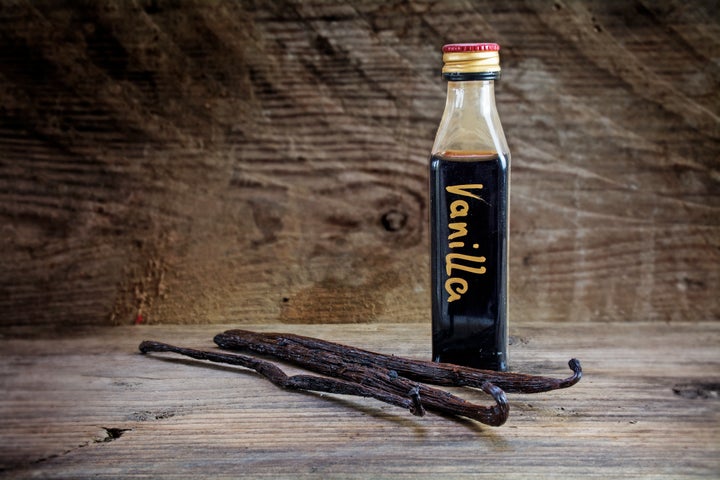
Before we can talk about imitation vanilla, we need to talk about real vanilla and what it is that makes it taste so good. The authentic vanilla extract we use in our favorite baked goods is made from soaking vanilla pods in alcohol. This process releases as many as 250 taste and aroma components, including one called vanillin.
Vanillin is an organic flavor compound that’s found in vanilla beans ― it gives our favorite cakes and cookies that classic vanilla flavor. Sadly, most of the 250 taste and aroma components in vanilla are destroyed from the high heats used in baking, so we don’t even taste them. But not vanillin.
Vanillin powers through to satisfy all of our vanilla needs. And vanillin is used to make imitation vanilla. But in imitation vanilla, it’s not derived from vanilla beans, but rather it’s synthesized in a lab. And the latter is more popular than you might think. Less than one percent of the world’s vanilla flavor comes from actual vanilla orchids these days. The rest is mostly synthesized from either guaiacol (which accounts for about 85 percent of it) or lignin.
Guaiacol is a fragrant liquid obtained by distilling wood-tar creosote or guaiac (resin from the guaiacum tree). Yum.
Lignin is a class of complex polymers that give woody plants their structure. (Fun fact: Imitation vanilla derived from lignin used to be made with the pulp waste from the paper industry, though now paper companies produce less waste so this has become a smaller source.)
To sum it up, your imitation vanilla is likely either synthesized from pulp or wood-tar creosote, but if you’re baking chocolate chip cookies it’ll still give you that vanilla flavor. Save your real vanilla extract for when you want a strong shot of authentic vanilla flavor, like in ice creams or custards.